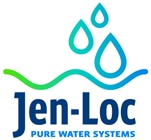PFAS, PFOA, PFOS, Gen X


How does Zeolite work?

Should I test my water?
Forever Chemicals
Here’s some disturbing news: There are man-made chemicals that will never break down in nature. In fact, almost 97% of the all living things (not just people) have some form of PFAS in their bodies.
Per- and polyfluoroalkyl substances (PFAS) are a group of man-made chemicals that includes PFOA, PFOS, GenX, and many other chemicals. PFAS have been manufactured and used in a variety of industries around the globe, including in the United States since the 1940s. PFOA and PFOS have been the most extensively produced and studied of these chemicals.
GenX is a trade name for a technology that is used to make high performance fluoropolymers (e.g., some nonstick coatings) without the use of perfluorooctanoic acid (PFOA). HFPO dimer acid and its ammonium salt are the major chemicals associated with the GenX technology. GenX chemicals have been found in surface water, groundwater, finished drinking water, rainwater, and air emissions.
All these chemicals are persistent in the environment and in the human body – they don’t break down and they can accumulate over time. There is evidence that exposure to PFAS can lead to adverse human health effects.
PFAS can be found in:
- Food packaged in PFAS-containing materials, processed with equipment that used PFAS, or grown in PFAS-contaminated soil or water.
- Commercial household products, including stain- and water-repellent fabrics, nonstick products (e.g., Teflon), polishes, waxes, paints, cleaning products, and fire-fighting foams (a major source of groundwater contamination at airports and military bases).
- Workplaces, including production facilities or industries (e.g., chrome plating, electronics manufacturing or oil recovery) that use PFAS.
- Drinking water, typically localized and associated with a specific facility (e.g., manufacturer, landfill, wastewater treatment plant, firefighter training facility).
- Living organisms, including fish, animals and humans, where PFAS have the ability to build up and persist over time.
Why are PFAS dangerous?
Studies indicate that PFOA and PFOS can cause reproductive and developmental, liver and kidney, and immunological damage in laboratory animals. Both chemicals have caused tumors in animals. The most consistent findings are increased cholesterol levels among exposed populations, with more limited findings related to:
- low infant birth weights
- effects on the immune system
- cancer (for PFOA), and
- thyroid hormone disruption (for PFOS)
PFAS in drinking water.
Drinking water can be a source of exposure. PFOA, PFOS, and GenX have been found in a number of drinking water systems due to localized contamination. Contamination is typically associated with a specific facility, for example,
- an industrial facility where PFAS were produced or used to manufacture other products, or
- an oil refinery, airfield or other location at which PFAS were used for firefighting.
How can clinoptilolite zeolite change the tide?
The natural zeolite filtration media works on an ionic basis. Like a magnet, charged molecules that make up these chemicals are attracted to and adsorbed up inside the zeolite and encapsulated — never letting it go. Between the positive and negatively charged media, we are able to adsorb all components of the PFAS family of containments as well as pharmaceuticals which have found their way into water supplies.
When “loaded up” our filtering media will restrict the flow through cartridges. You’ll know it’s time to replace filter cartridges when there is 18-25 PSI loss on the gauges above the filter.
The spent media is non-hazardous. You may dispose of it in a multitude of ways: mixed into garden or walkway soils, mixed with concrete, spread like sand in the winter, or safely disposed in a landfill. Other media options can not offer that level of safety.
Zeolite media does not break down over time or when you rub it together like granular activated charcoal (GAC). GAC attracts to the outside of the media and can create a situation where the offending pollutant has become concentrated and now more dangerous than ever!
Jen-Loc systems for removing PFAS from your water.
If there is a concern that your water has any of the PFAS family of contaminants, we recommend you install the POE (point of entry) 10″ or 20″ systems plus an Under Counter unit for the cold water supply on both kitchen and bathroom faucets. The POE will treat the water, which then travels and at times sits in the plumbing pipes. That will loosen up any buildup over the years which could purge contaminants to your fixture. With the addition of the under counter polisher, you have the safety of knowing that nothing is getting past those — and into your drinking water.
